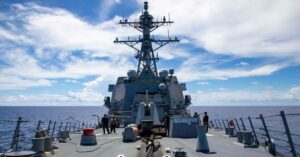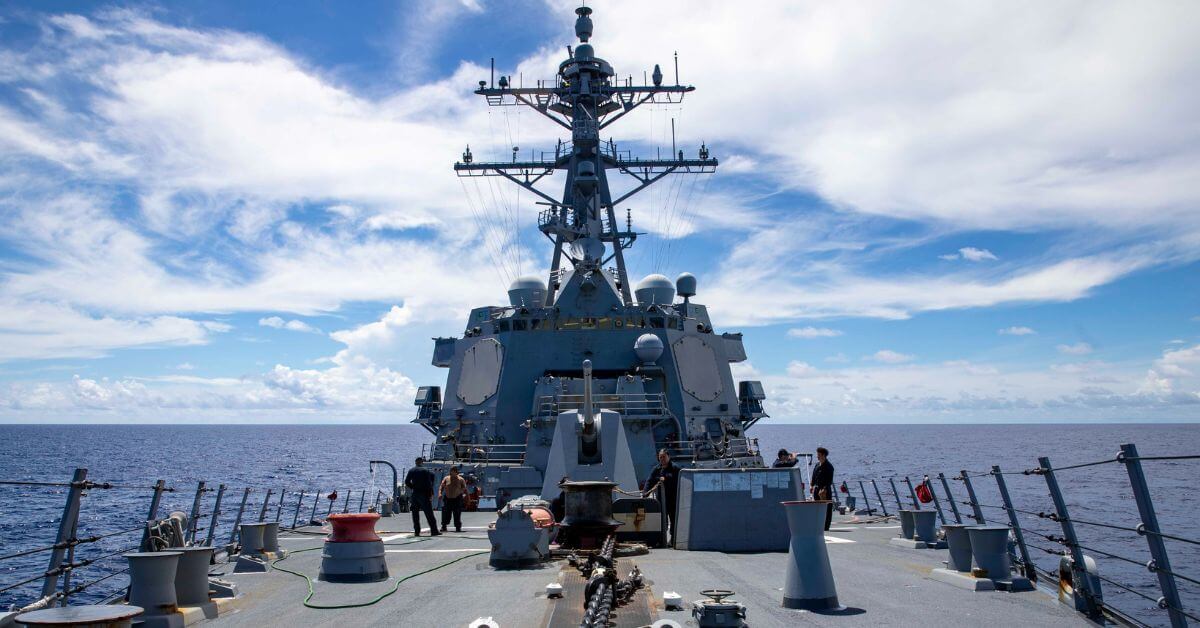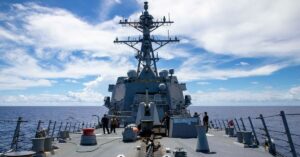
Europe’s STAR Capital & Partners To Acquire Global Ship Management Firm V.Group
June 18, 2024
MV Tutor Ship Sinks After Houthi Drone Attack In The Red Sea Damages Its Stern
June 19, 2024

In partnership with the Defense Innovation Unit (DUI), the US Navy has been employing artificial intelligence (AI) to detect underwater threats autonomously.
The initiative marks an important milestone in modern warfare strategy focused on increasing efficiency and effectiveness in maritime operations.
According to defense authorities, the initiative coordinated by the Defense Innovation Unit’s Navy service lead, Alex Campbell, has successfully halved the time required to search the ocean floor for under-sea mines.
The accomplishment has been attributed to AI algorithms integrated into underwater drones that use sonar sensors to identify shapes and navigate underwater terrain.
The Defense Innovation Unit, based in California and assigned to integrate commercial technology into military applications, launched the initiative two years ago in partnership with the US Navy.
Major Nick Ksiazek of the US Marine Corps, working on the DIU’s AI portfolio, emphasized the project’s advancement and significance in current military operations.
Key breakthroughs include replacing manual review activities performed by sailors with AI-driven workflows, drastically reducing mission durations and optimising crew deployment.
Campbell stated that these AI technologies have streamlined operational workflows and rapidly adapted to varied maritime environments ranging from the Red Sea to the Pacific.
The project has completely changed how AI models are updated by enabling rapid adjustments that can be made remotely while drones operate.
According to Ksiazek, this agility contrasts prior timescales, where model upgrades may take up to six months but are now accomplished in less than a week.
The DIU’s collaboration with commercial providers such as Arize Al, Domino Data Lab, Latent AI, and Weights & Biases has been critical in reaching these improvements.
In 2022, prototype agreements with these companies cleared the path for the creation of a strong artificial intelligence infrastructure designed to detect underwater targets.
These collaborations have been proven crucial in speeding up the adaption of AI models to changing threats and environmental variables.
Commander Eli Ford highlighted the strategic relevance of these advancements, stating that the new AI models have been carefully tested against a wide range of potential threats, ensuring their ability to respond quickly to changing tactical situations.
The US Navy intends to expand the deployment of this AI infrastructure across several defense sectors, demonstrating its commitment to preserving technological leadership in an increasingly complex global security scenario.
Reference: Bloomberg
U.S. Navy Integrates AI Into Underwater Drones For Autonomous Threat Detection appeared first on Marine Insight – The Maritime Industry Guide
Source: Maritime Shipping News


